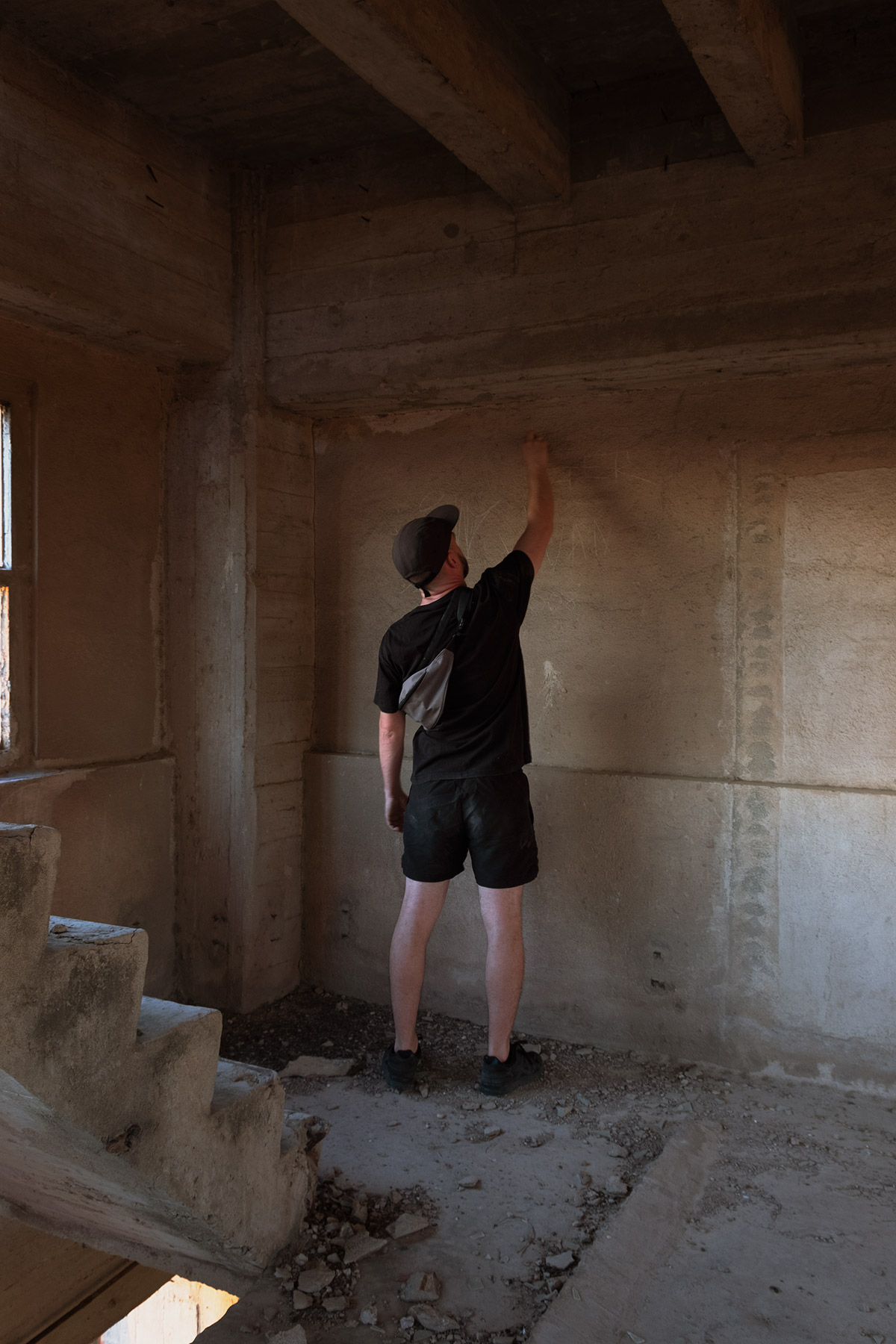Sergio Gómez
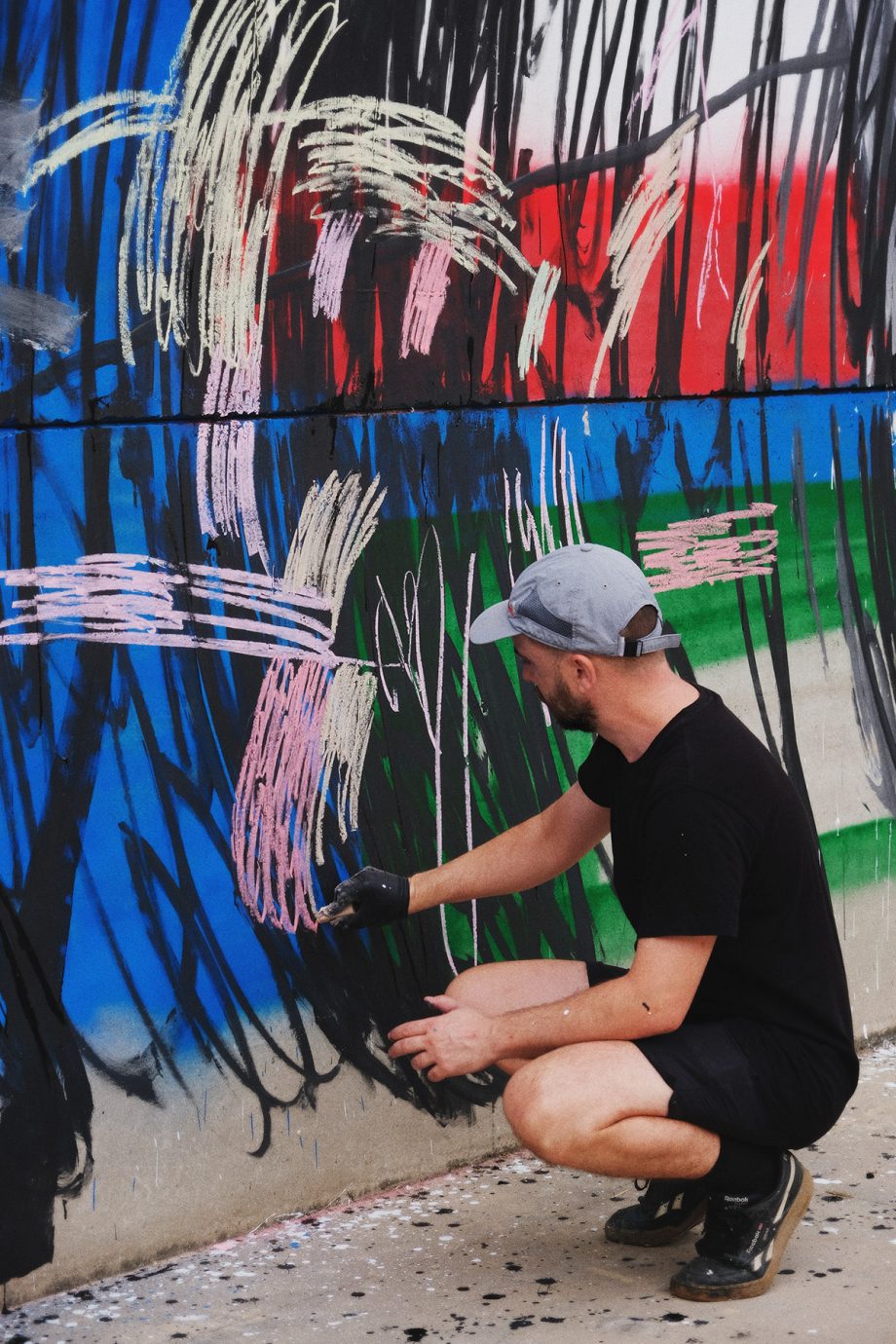
WORDS BY SUSO BARCIELA PHOTOGRAPHY BY LHAURA RAIN SERGIO GÓMEZ AND SWINTON GALLERY
SUSO BARCIELA WWW.ELESPACIOAPARTE.COM @FORMS.FOLLOW.FUNCTION – LHAURA RAIN WWW.LHAURAIN.COM @LHAURA. RAIN – SWINTON GALLERY WWW.SWINTONGALLERY.COM @SWINTONGALLERY STARRING SERGIO GÓMEZ WWW.SRGER.COM @SRGER SEVILLA SPAIN
Surprising the audience in each of your creations is challenging, and impressing both the art scene and critics even more so. One of those artists who has captivated the contemporary art scene is Sergio Gómez, whose work delves into the nuances of color, composition, and intuition. Through his intimate approach and deeply reflective process, he has managed to create a unique visual language that transcends conventional boundaries.
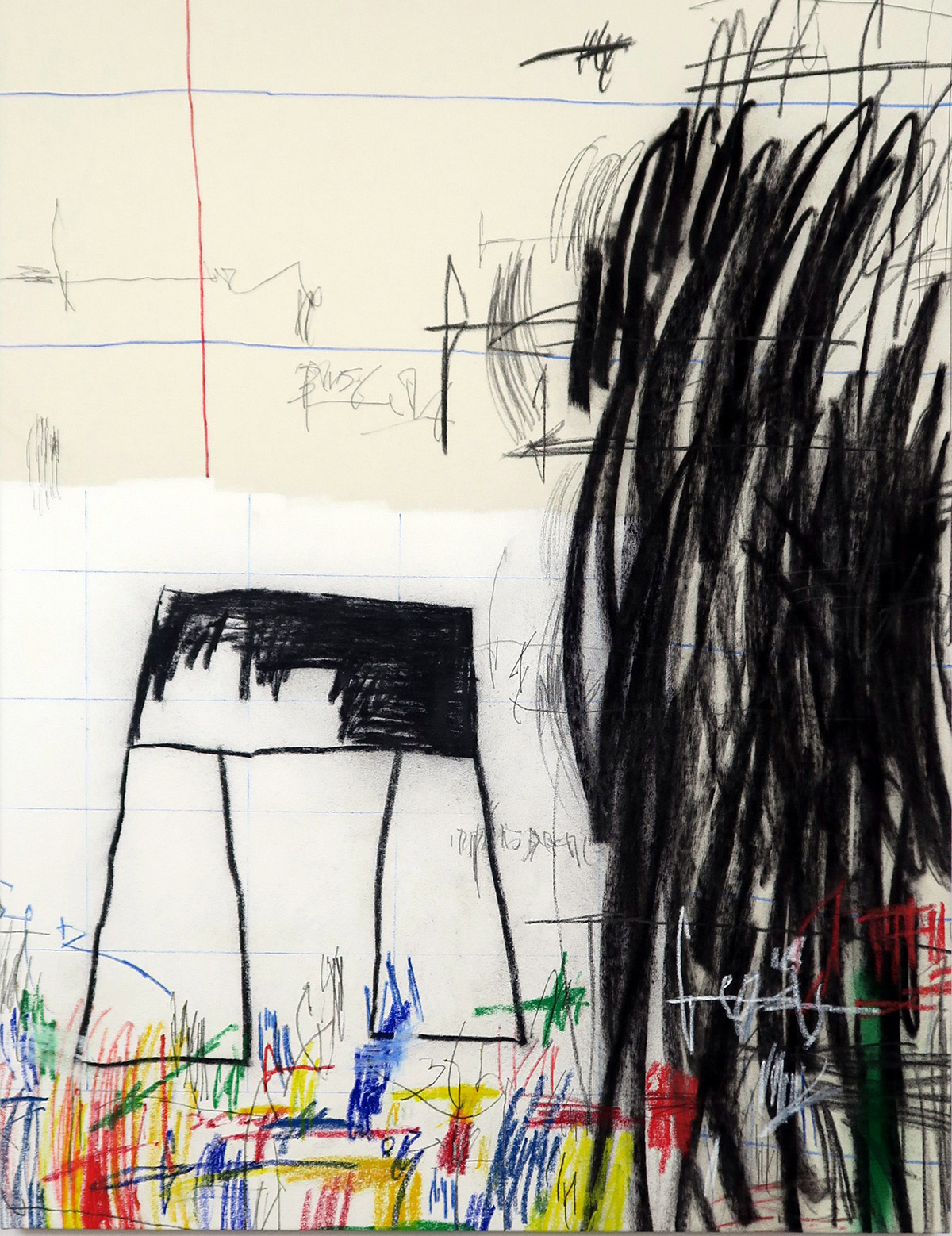
At the core of Sergio’s work lies the masterful fusion of color and composition. His canvases are more than mere surfaces; they are vehicles for conveying emotions and sensations through the interplay of tones and shapes. However, his creative process is not merely the result of sudden inspiration; it stems from careful observation of the world around him. The city becomes his palette, abandoned industrial sites become his canvas. Thus, his mural painting in these forgotten places, neglected by industry and society, restores life to these locations through art, turning them into silent witnesses of his creative process.
Beyond technique and execution, the Sevillian artist’s creative process is a journey in itself, revealing that his approach is not simply about painting but about problem- solving. Each brushstroke is a step toward the visual solution he seeks, and this approach is evident in his refusal to create traditional sketches. Instead, he immerses himself obsessively in experimentation, trial, and error. The construction of his work is an evolving process based on ideas rather than sketches, and each stroke is a small test that guides him toward the final creation, like pieces of a puzzle gradually coming together.
His philosophy towards painting resembles the fluidity of a conversation or the instinctive act of walking, as in neither a conversation are all words planned nor is the next step calculated during a walk. After 25 years immersed in his own formal and visual language, he knows his work intrinsically and understands how it will function even before beginning. However, he rejects falling into the trap of repetition, constantly seeking evolution, exploring new colors, shapes, and gestures to keep his art fresh and vibrant.
In an intimate dialogue with the artist, he shares that his process does not adhere to a rigid routine. Unlike the conventions of an 8-hour studio workday, he immerses himself in intuition and contemplation. Thus, each stroke is the result of hours of observation and thought, giving his work a remarkable depth.
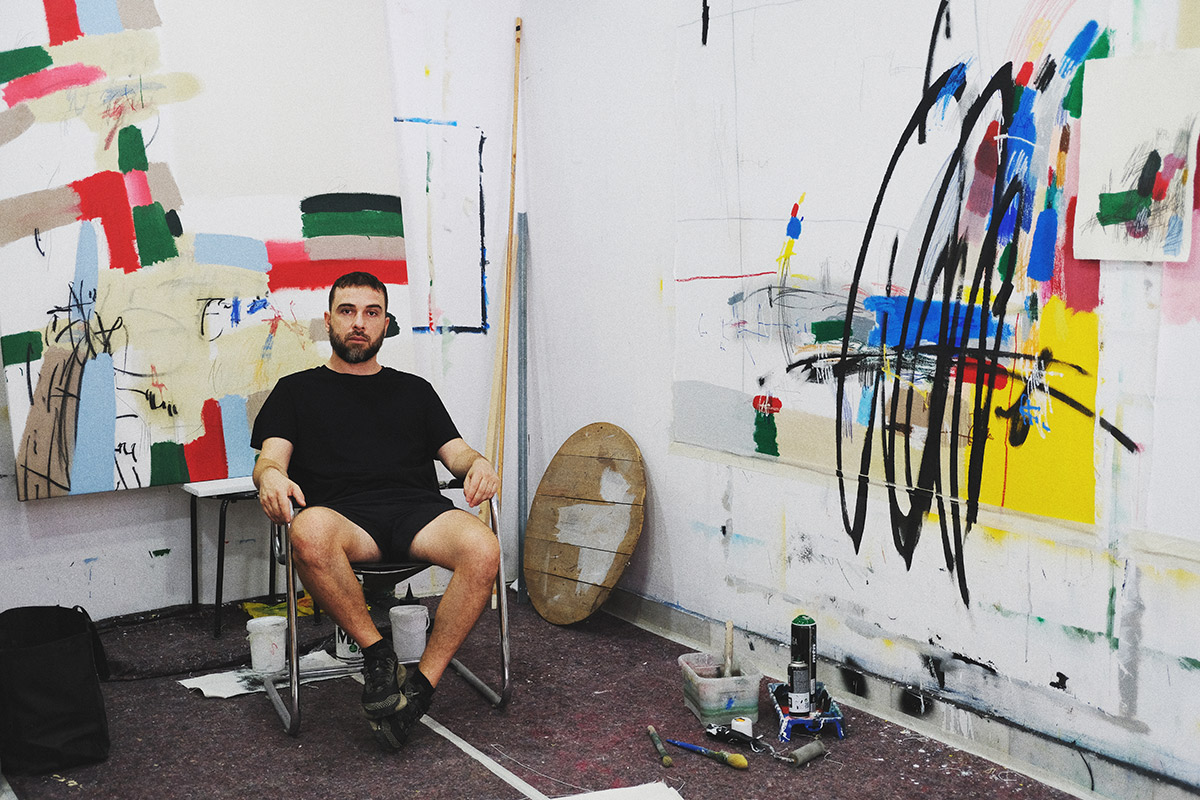
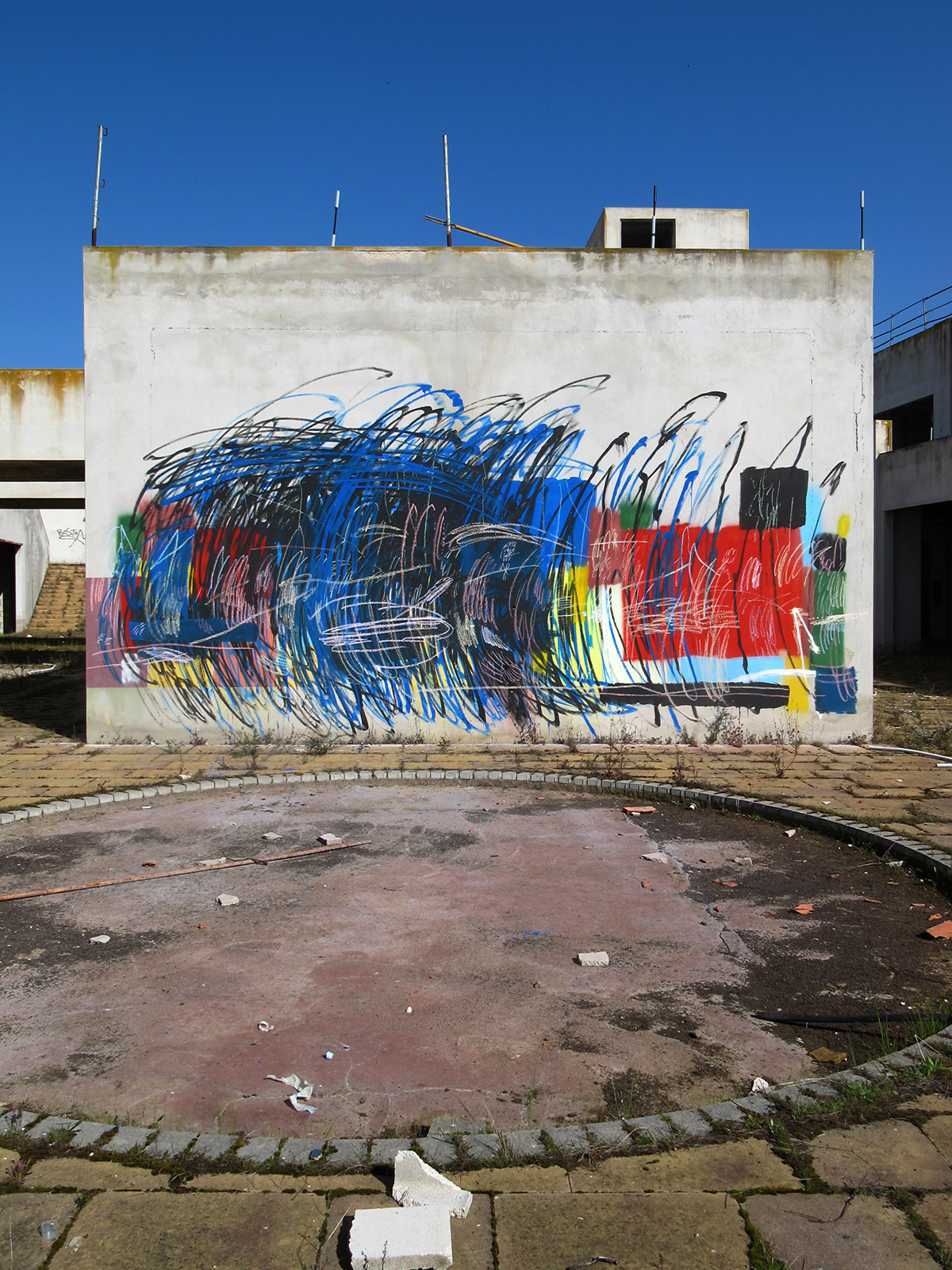
His work is nourished by diverse stimuli, and through his role as a photographer, he captures fleeting moments and urban compositions that stimulate his creativity. Each found object, every color, and every interaction between elements in the environment are sources of inspiration for him. The concept of space-time is fundamental: objects change their meaning in an instant, and capturing those moments is essential to his creative process. Thus, the city becomes his museum and visual diary, where each captured image becomes a note in his artistic symphony.
In the intimacy of his creative process, he reveals himself as a tireless photographer, and although his photographs are not always published, he treasures them like a treasure. His personal archive is a compendium of inspiration and memories, an inexhaustible reservoir of ideas that never expire. In this intimate corner, he allows intuition to become the guiding thread of his work, weaving an intricate dialogue between conscious decision-making and the creative spark that resides deep within his being. This treasure of inspiration is found in his archive of photographs of accidental strokes that cross his path in the streets, and despite having many years of experience in graffiti, he acknowledges that there are strokes he considers unattainable to reproduce. According to him, street art is a pure manifestation of the anonymous, in contrast to the ego inherent in graffiti, and these strokes, perhaps originally executed as mere spray experiments, have been immortalized on the streets, and the artist admits to longing for the ability to replicate them when facing the canvas in his studio.
He describes himself as a painter from the unconscious, with a particular appreciation for shadows and random shapes. His artistic creation, a blend of premeditated accidents, is akin to the experience of studying or cooking: absorbing a text or a recipe and making it your own. When questioned about the role of intuition in his creative process, he doesn’t hesitate in his response: “I believe it’s 100%. I’ve created a super intuitive language, and I don’t need to think about the next step. It comes automatically.” His work, infused with undeniable gesturality, is a living testimony to the inner voice that guides each stroke, each color choice, and in turn, intuition is more than a sporadic act; it is the very foundation upon which he builds his art.
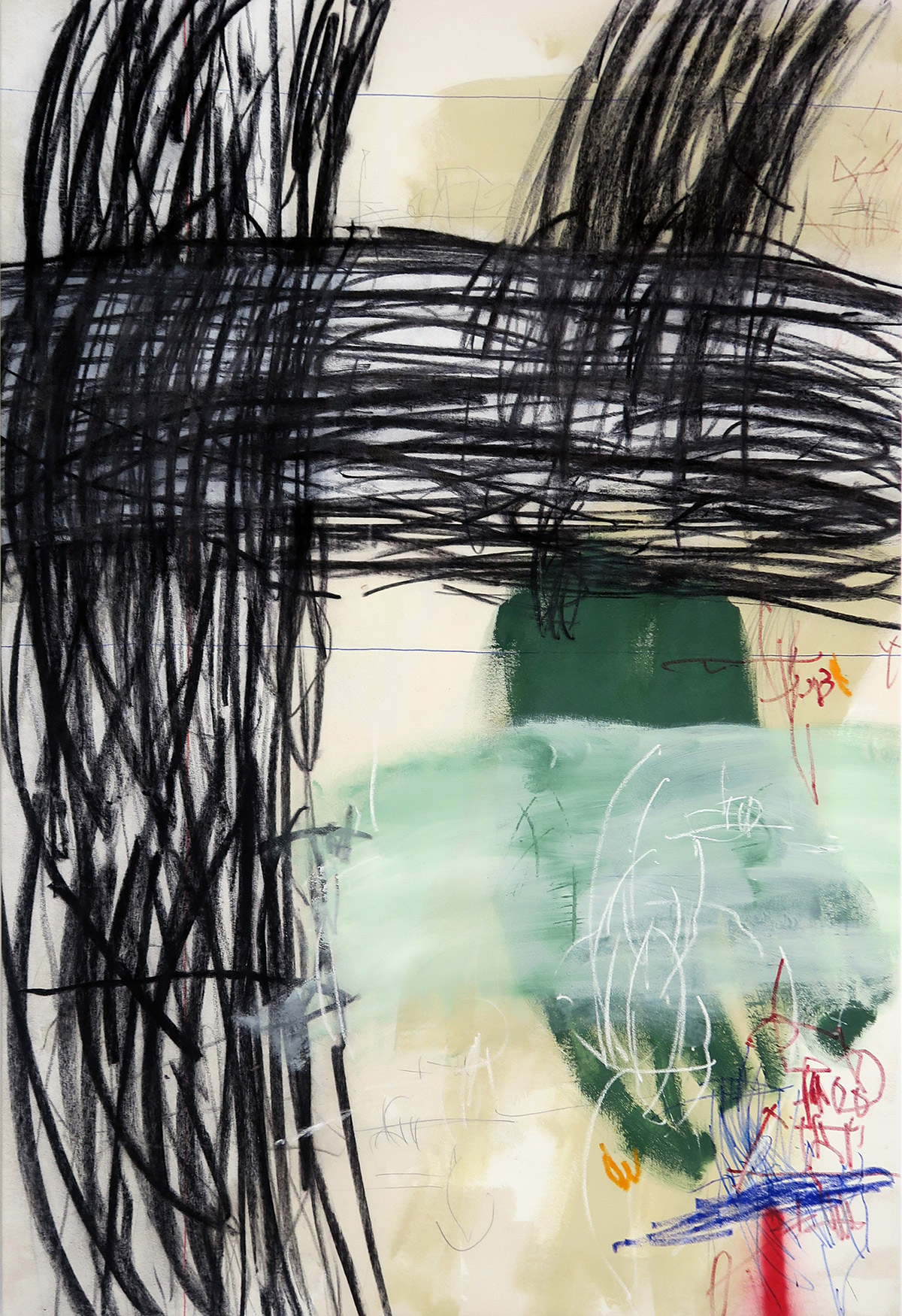
This interaction between the conscious and the instinctive is fascinating. Sergio is able to masterfully balance decision-making with the spontaneous flow of intuition. His paintings are a reflection of that symbiosis, where conscious decisions combine with creative impulses. “I take decision-making very seriously. It’s intuitive, but at the same time, I think a lot about the next step,” he reveals. In his own words, an intricate process is revealed in which each brushstroke is a step further between deep thought and visceral reaction, and this intuitive approach also leads him to explore uncharted territories. Gómez confesses, “There are things I’ve done, and I don’t even remember doing them, but I did them unconsciously because the artwork demanded it.” He explains that art becomes an autonomous force that guides his hands, allowing the artwork itself to have a voice and shape itself through his actions. In this space of creative collaboration, the artist becomes a catalyst, a vehicle through which artistic expression flows unrestricted.
The dialogue becomes even deeper when asked about his greatest challenge as an artist. With honesty and conviction that is revealing, he shares, “The biggest challenge is to keep going.” In a world where adversity can extinguish even the brightest flame, he stands as a beacon of perseverance. “I’ve worked on many things that have nothing to do with art, and yet I’ve continued to paint,” he says with unwavering conviction. His perseverance is a reminder that art is not just an act of creation but an act of devotion, where consistency is the master key that unlocks the doors of artistic fulfillment. “One of the hardest things is to stay mentally strong and keep painting,” he shares. “That happens when your painting comes from the romantic part, the reason you started painting for pleasure or necessity, and you would paint even if everything went wrong. Especially when everything goes wrong.”
With an undeniable attraction to mural painting, he transforms the empty spaces of industry into giant canvases, where the very morphology of the wall guides his creativity, and it is here that problem-solving becomes the essence of his artistic process.
The architecture of the space itself dictates the decisions in his work. The presence of elements such as pipes and structures on the margins of the wall becomes crucial factors that influence composition and material choice. In each work, he confronts these architectural challenges, masterfully weaving them into the tapestry of his creation, making the murals not only visual works but ingenious solutions that respect and harness the environment that houses them. When venturing into the creation of large- scale outdoor paintings, he faces a series of unique logistical challenges.
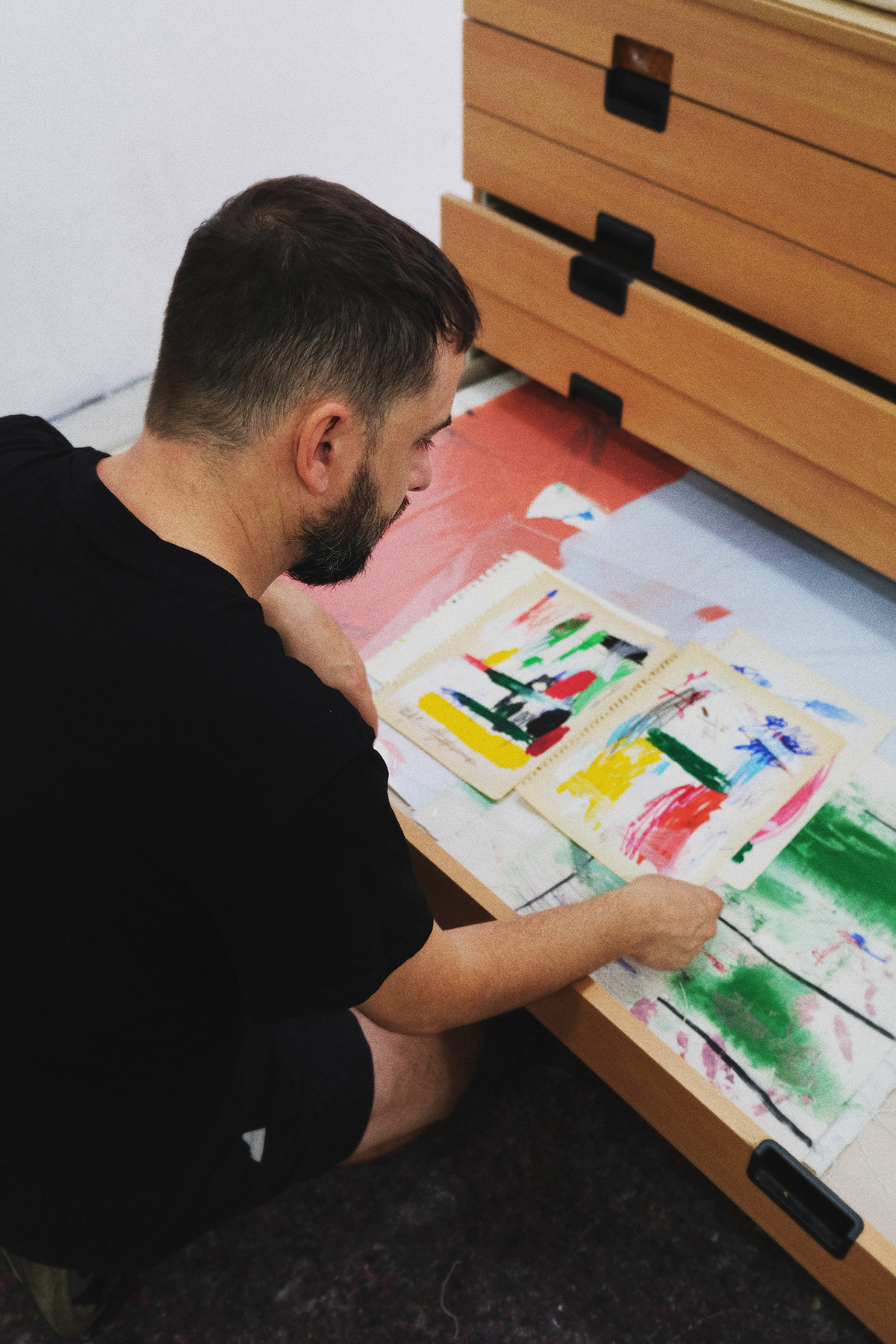
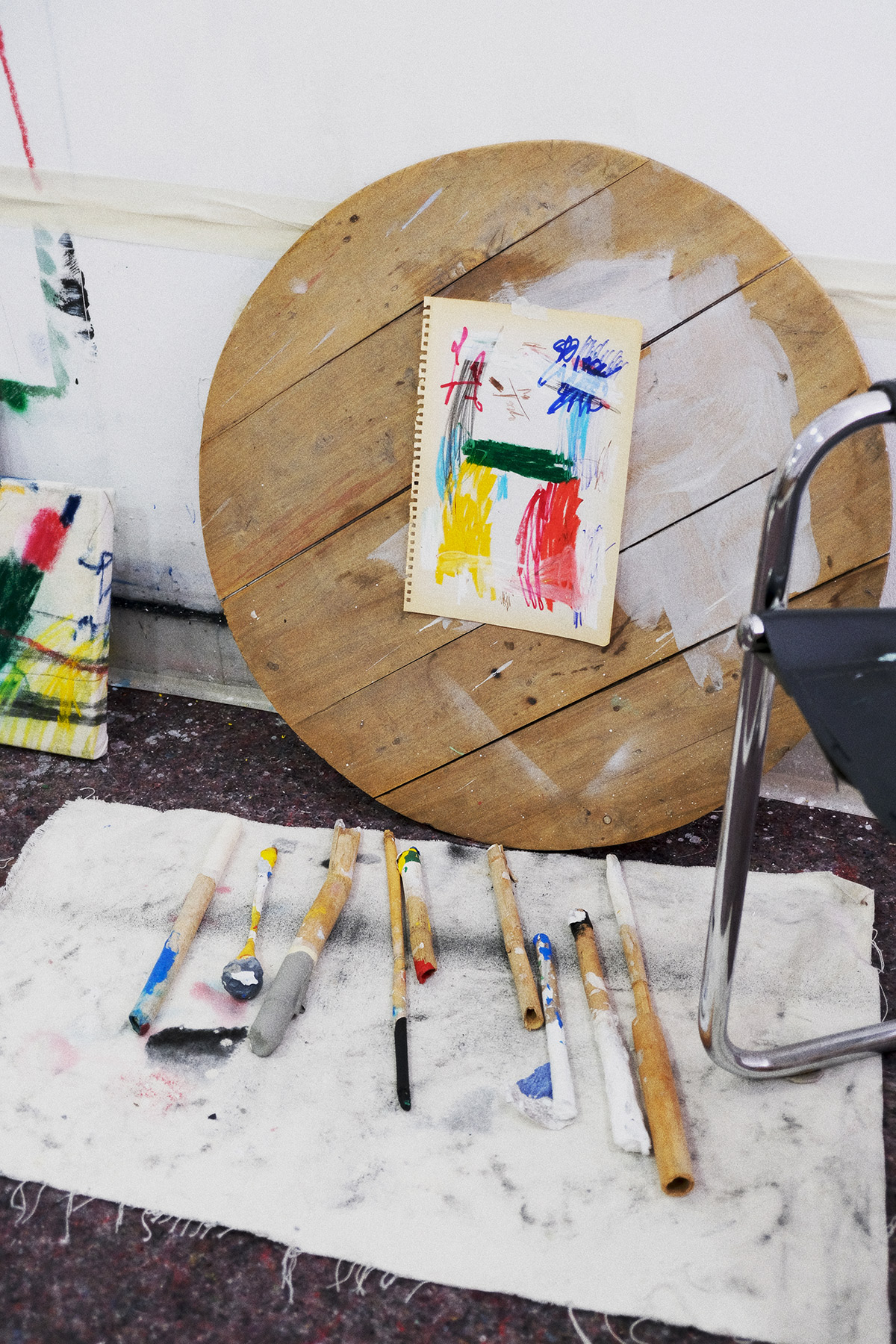
This interaction between the conscious and the instinctive is fascinating. Sergio is able to masterfully balance decision-making with the spontaneous flow of intuition. His paintings are a reflection of that symbiosis, where conscious decisions combine with creative impulses. “I take decision-making very seriously. It’s intuitive, but at the same time, I think a lot about the next step,” he reveals. In his own words, an intricate process is revealed in which each brushstroke is a step further between deep thought and visceral reaction, and this intuitive approach also leads him to explore uncharted territories. Gómez confesses, “There are things I’ve done, and I don’t even remember doing them, but I did them unconsciously because the artwork demanded it.” He explains that art becomes an autonomous force that guides his hands, allowing the artwork itself to have a voice and shape itself through his actions. In this space of creative collaboration, the artist becomes a catalyst, a vehicle through which artistic expression flows unrestricted.
Unlike his studio, here he works on multiple heights, times, and overlapping layers, facing the complexity that comes with it. He has collaborated with other artists using industrial machinery, and in this context, dialogue and communication become essential. He points out, “In collaborations, the dialogue should be in the painting, not in asking permission from the other.” In this context, communication becomes the backbone of the work, allowing collaboration to flow without interference. Verbal exchange becomes crucial, highlighting the need to communicate ideas directly and efficiently, as well as the importance of feeling and trust in fellow artists. Sergio delves into the relationship between the artist and space, seeking to imbue value into these places that have been his canvas for years.
The evolution of a lifetime unfolds in every stroke and nuance of the artist, whose journey spans a quarter of a century of exploration and creativity. The question, “How much of your life would you say is in your artworks?” triggers a reflective pause, followed by a smile in his voice. As he shares his perspective, a journey spanning two and a half decades of experience is revealed. He has found a constant companion in intuition in his creative process and confesses that while he now spends more time considering color, the intuitive essence remains a pillar. “I try to correct myself,” he says, “when I see some- thing in my work that reminds me of an ear- lier stage, I don’t like it, because that’s some- thing I’ve already passed.” And in his quest to communicate more authentically and directly, he has learned to refine his artistic voice over the years. However, the path of art is not limited to canvases; it is a journey that has taken him from the streets to the studio and from the studio into the complex world of the art market and galleries. Through these experiences, he has come to understand that the professionalization of his format is an essential tool for adapting to different sectors and audiences, elevating the quality and impact of his work.
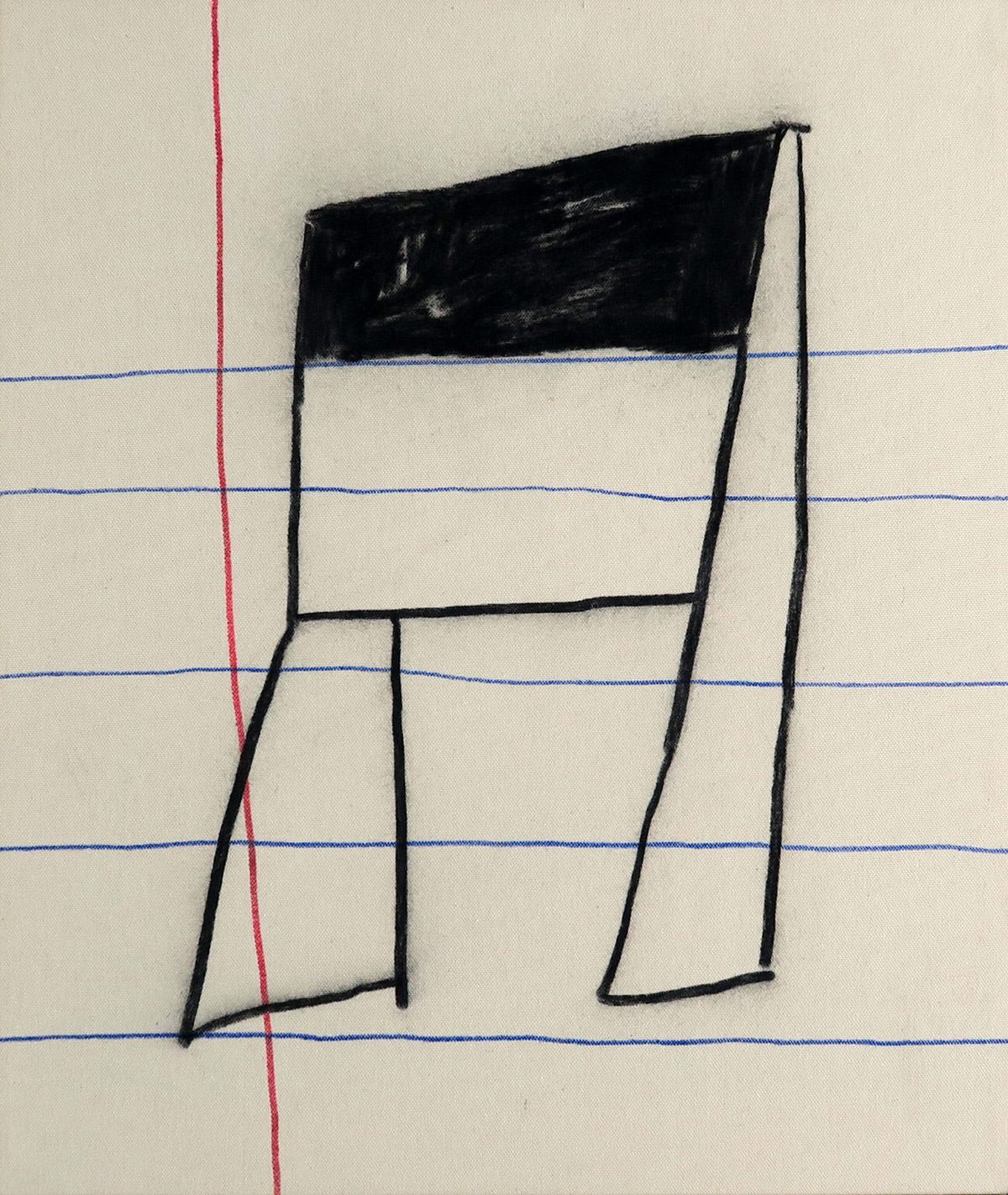
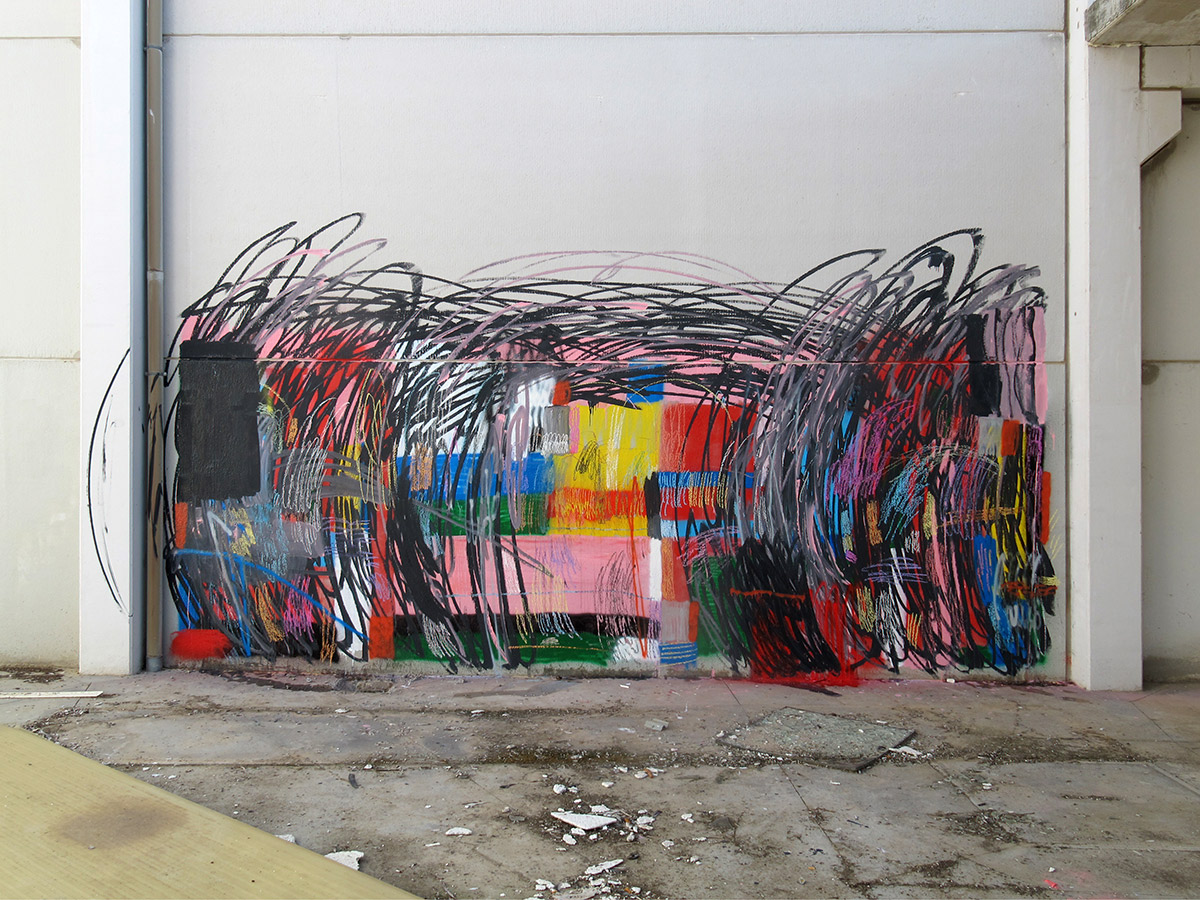
“What do you expect the audience to expe- rience when they contemplate your creations?” The artist addresses this question candidly, acknowledging that immersing oneself in his work requires a certain visual education. In his close circle, he finds fertile ground for intimate conversations about his work, where familiarity with the artwork and its context facilitates a genuine understanding of his personal and artistic evolution. Recognizing how our education has shaped our perception, Sergio invites us to consider that our expectations are as varied as the forms of art we appreciate.
In an approach that combines informality and depth, he shares a heartwarming anecdote. His mother, upon observing his pieces, tells him that they look like a child’s scribbles, to which the artist responds with gratitude: “Thank you, Mom. That’s the best thing you can tell me. I’ve achieved my goal, that’s what I want to do.” This response encapsulates the essence of his art and purpose, emphasizing that to fully appreciate his work, the audience should possess a certain level of visual literacy, as his creations do not necessarily have explicit meanings. Instead, he focuses on other aspects such as concept, form, color, and sensations.
In Sergio’s creative universe, the dialogue between material, color, and surface comes to life. The artist emphasizes the importance of building a solid foundation in understanding the abstract, a quest that sets him apart from the currents of globalization and inspires him to escape the possibility of coinciding with other creators. He has even reached surprising conclusions by discovering the influence of painters he was completely unaware of. “It’s a swampy terrain,” he admits, but this thoughtful and research-based exploration has guided him toward admirable personal and artistic evolution. In his creative process, he faces the challenge of assimilating influences while maintaining his distinctive voice, and this assimilation, which involves flirting with unfamiliar styles, is a process that immerses him in learning and adapting to the novel. Originally from the world of graffiti and lettering, he has embarked on a transformative journey that transcends his origins, exploring a vast universe of possibilities within his own work.
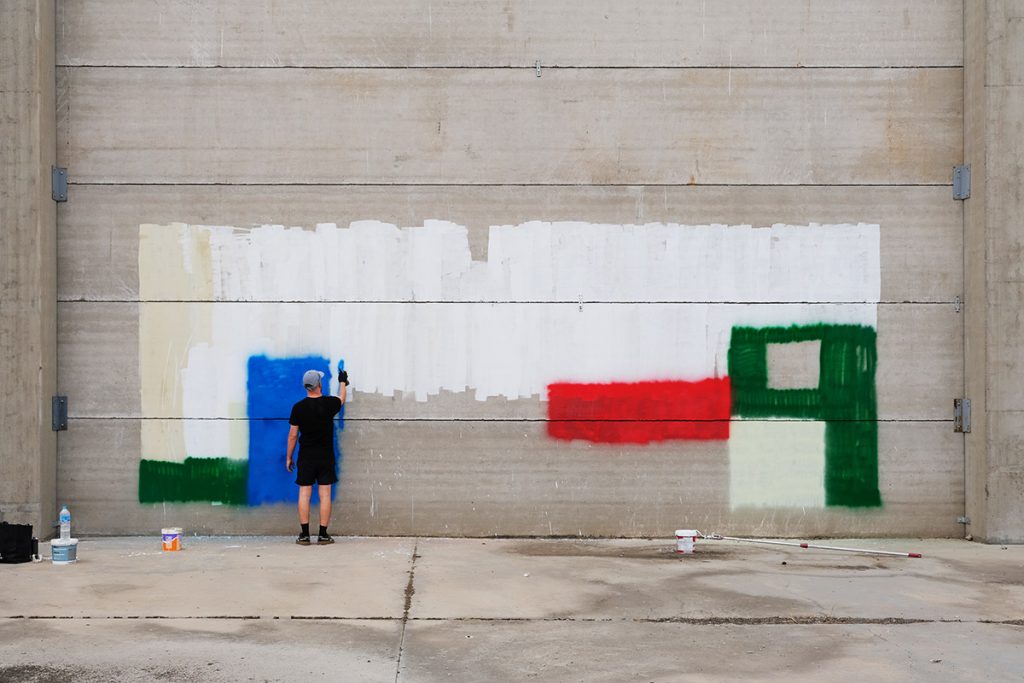
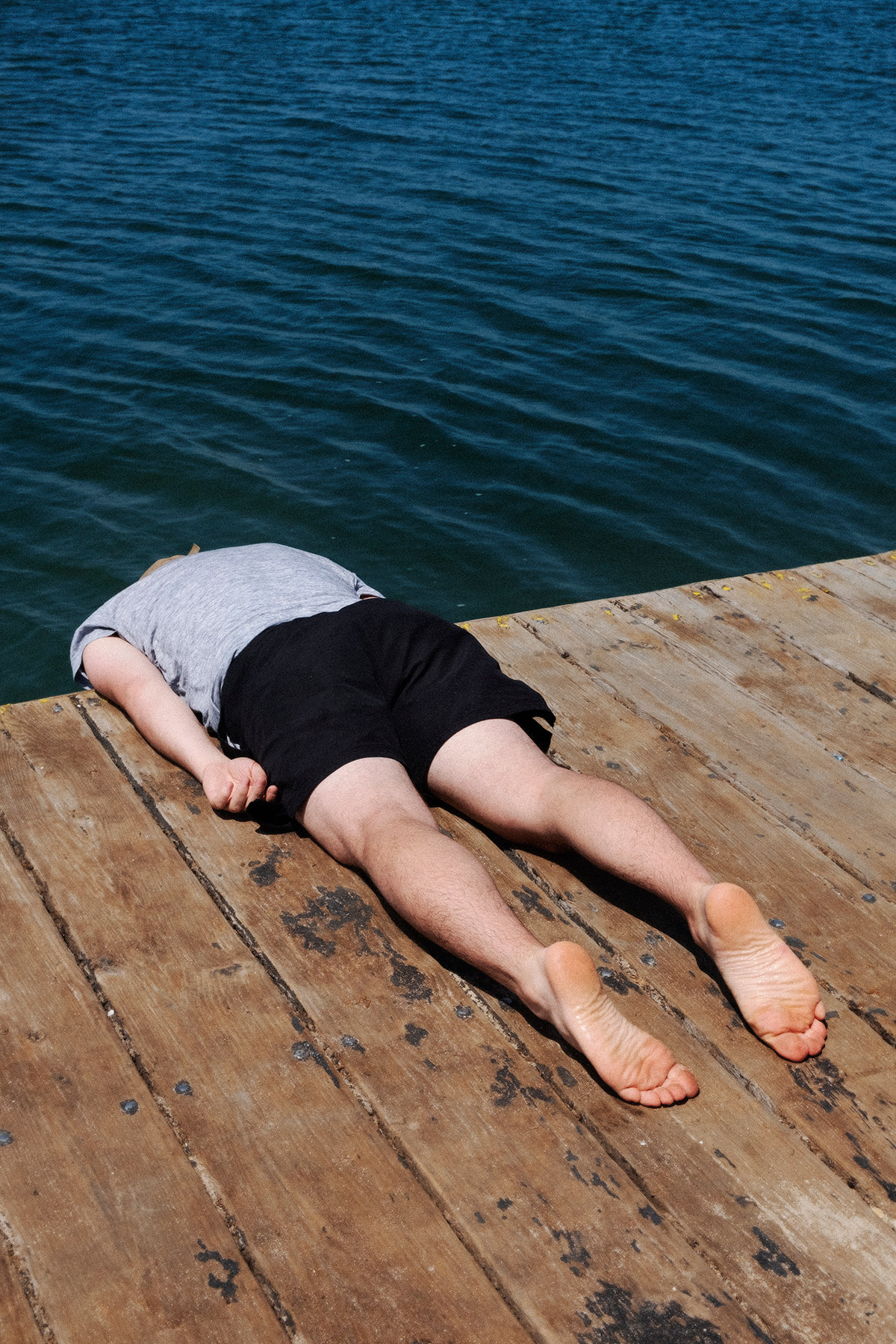
The delicate balance between artistic identities is evident in his response when asked if he minds being mistaken for a graffiti artist. His answer reveals the complexities of external perception and the roles he embraces. He points out how for a long time, galleries considered him a graffiti artist, while in the world of graffiti, he was seen as an artist. He doesn’t label himself as either but distinguishes himself from both terms, a perspective that highlights his evolution. The transition from graffiti is palpable in his trajectory, and although he has left behind that facet, he often faces the prejudice of being quickly pigeonholed due to his use of spray paint in contemporary art exhibitions. Therefore, his desire to unlink art from the stigma of aerosol opens up a conversation about how different circles interpret his work and how artistic evolution is not limited by labels.
Working simultaneously on multiple pieces contributes to his productivity, while his meticulous and progressive approach has given life to his own visual and formal language, culminating in creations that embody his insight and constant exploration. His philosophy is evident in his appreciation for transcending conventional boundaries, which he calls “expansive painting.” This concept challenges the traditional limits of the canvas, where painting, in his vision, could be infinite, escaping containment within margins. He recognizes authenticity in this approach, avoiding contained gestures or the artificiality he feels when limiting expression, and his need to break free from boundaries brings with it an affinity for gravity and the flow of paint. Furthermore, his technique expands even further with the use of liquid paint, allowing art to take its own path, responding to gravity, and creating a unique visual and tactile experience.
Gómez reflects on how a turning point in his life marked the trajectory of his work. It was the memory of thinking that he would never stop painting, despite not being a drawer in his childhood – his mother does not keep any of his drawings from that time – that led him to the world of painting through graffiti. The latter served as his gateway to art, starting at the age of 11 and developing skills that would lead him to create pieces he would share in public spaces. His beginnings in graffiti were tough, and he shares an anecdote about saving the money from his school lunch to buy spray cans on weekends, but he never considered becoming a professional artist at that time.
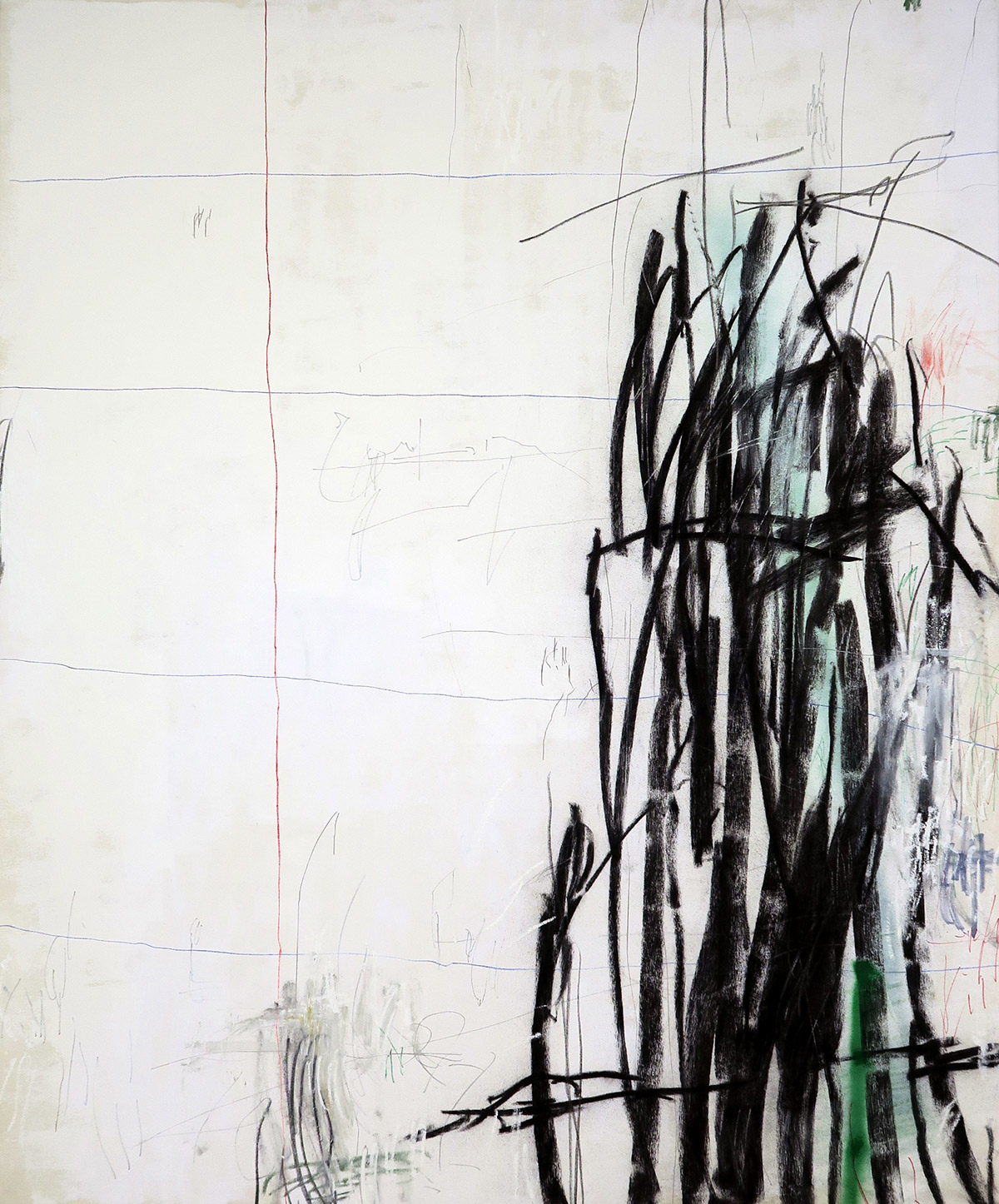
He deeply identifies with Seville, where he has lived most of his life, despite residing in other places for short periods. Despite others’ perceptions, he maintains his roots and connection to his hometown. Beginning his artistic journey with acrylic paint on the street, he soon realized the surprising capabilities of this material to capture gesture. He also recognized the importance of his materials and their interaction on the canvas, discovering an unexpected ally in chalk for his mural creations. This chalk, used in the final layer of some of his murals, gives the artwork an ephemeral character and a unique behavior and evolution, which Sergio constantly records through photographs.
This revelation came from observing children painting on the streets, and he found it so interesting that he immediately adopted this technique. It is evident that chalk offers a certain malleability through water but also embraces the fleeting nature of urban objects, fading with the rain, emphasizing the value of time in these creations. The possibility of visiting them over time adds a fascinating dimension to his work.
He values the richness of everyday details, finding inspiration in the random marks of cement or paint on walls or the random combinations of directions that form perfect compositions. His approach to grouping and creating his paintings in series stems from the desire to explore multiple questions and answers on a blank canvas, where he can add and remove elements at will. Despite leaving paper behind due to his preference for larger dimensions, he values the lines of the notebook, cleverly incorporating them to evoke the simplicity of a blank sheet and shape his compositions. The division of spaces, a technique adapted intuitively, reflects his ability to solve artistic challenges by playing with planes. In his works, he seeks multiple solutions on a single canvas, with a process he describes as highly intuitive. The notion of detachment from the artwork becomes a stimulating concept, giving him the opportunity to confront his creations from new perspectives and completely reconfigure the creative process. In his workspace, music plays a crucial role. Classical music, rap, and instrumental music create an atmosphere conducive to his creativity, merging his personal life with his process.
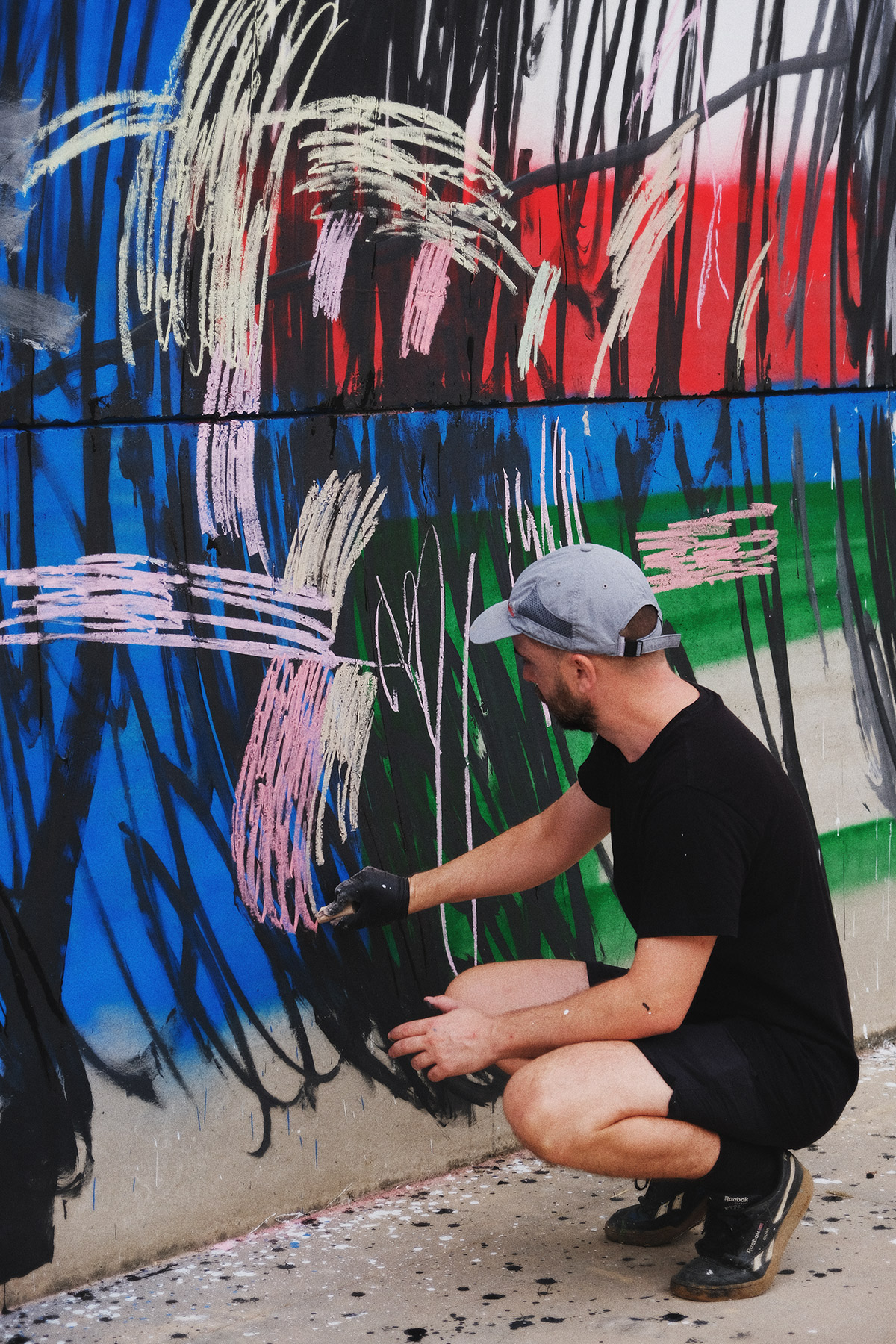
Gómez delves into the complexity of gestures, a process that involves extensive trials and enduring dedication to discern what works and what doesn’t. Recognizing the individual perceptiveness of each person, he draws an analogy with the writing process, where a writer incorporates their own influences without necessarily copying. In his creative approach, the act of “seeing outside of painting” is of great importance, and his work is grounded in the experience of art in the urban environment, with a deep study of murals and the analysis of pictorial accidents on the streets, which he brings back to his studio. His intimate relationship with materials makes him an expert in their discovery and research, and through a process of trial and error, he finds his artistic voice by solving the challenges integrated into his work. From learning through mistakes to his fascination with the graffiti buffing technique, his approach is filled with exploration. This mindset of “building to destroy,” the interaction between creation and destruction, adds an intriguing nuance to his artistic approach.
His testimony about his family’s perception of his artistic career reveals a journey filled with challenges and determination, as he comes from an environment where no one in his family had pursued art, and he initially faced resistance at home toward his passion for graffiti. Raised in a humble environment, his parents, who came from families that dealt with the aftermath of the Spanish post- war period, had not had the opportunity for formal education. However, he expresses gratitude toward his parents for allowing him to study what he chose. Amidst the challenges, his father’s figure resonates in his memories, asking, “Don’t you see that you won’t achieve anything with this, and it won’t make you any money?” The artist responded with passion and conviction, affirming that he would paint even if he were a beggar, thus demonstrating that his approach is a way of life rather than just a profession. He now celebrates the authenticity of creating for art’s sake rather than for financial gain, highlighting how that attitude has influenced his artistic journey.
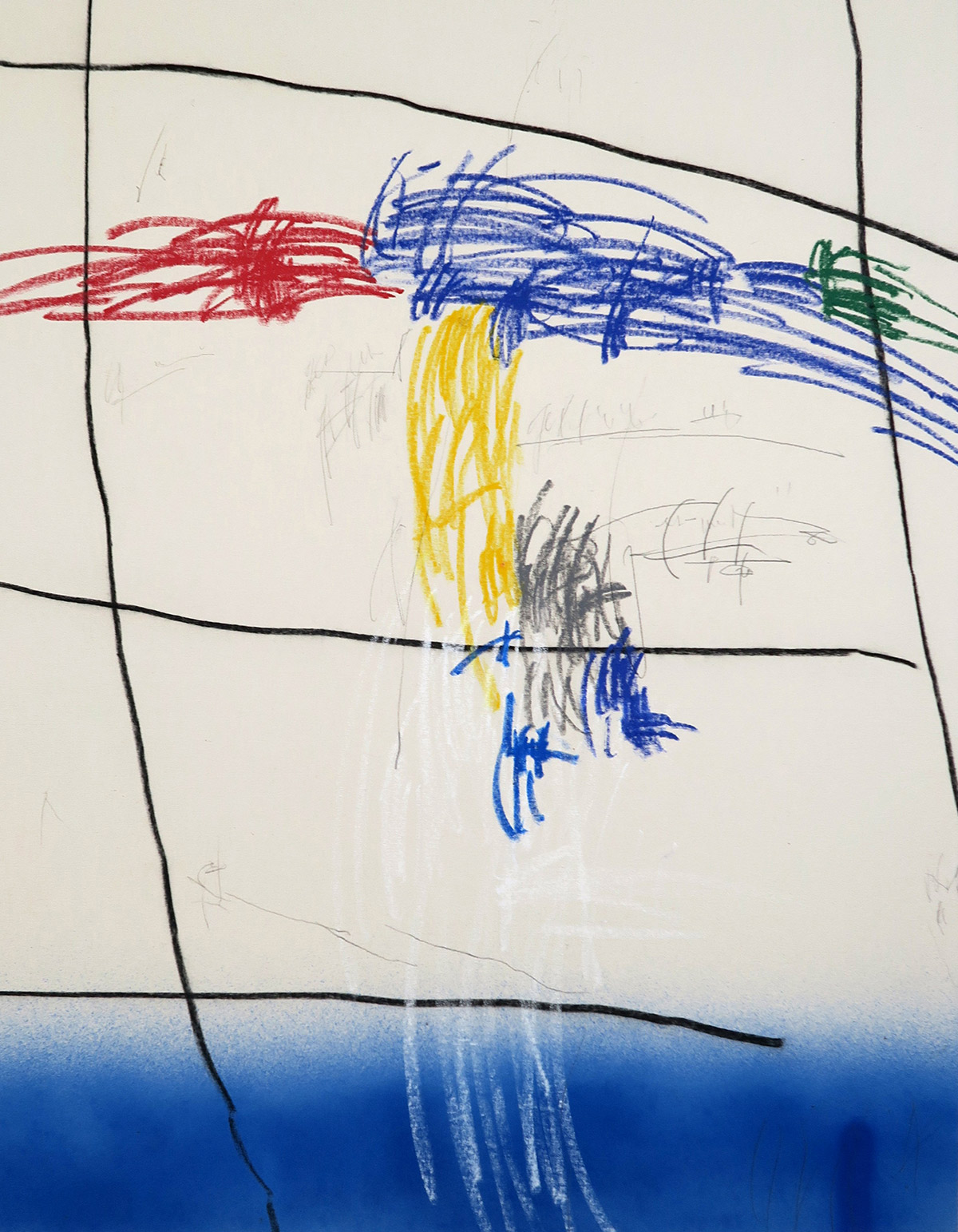
His relationship with the Swinton Gallery and his impactful solo show at the Urvanity art fair are just some highlights in his career that have contributed to solidifying his position in the European art scene. He has woven his creativity between two key cities: Seville and Madrid, establishing a logistical center in the capital, allowing him to maintain a close connection with his clients and gallery owners, guided by intuitions and sensations in his decisions. Soon, in the artistic residency titled “From the Grain to the Mountain,” in collaboration with Swinton Gallery and curated by Jordi Pallarés, he will provide a complete window into his creative process, where visitors can share experiences and immerse themselves in his artistic world.
Although his connection with the artistic circle of Seville is not prominent, he is more sought after in the vibrant artistic scene of Madrid, where he is actively involved in exhibitions and projects. His personal life intertwines with his work, sharing his life with his partner Laura and their dog Gala, who accompany him on nature walks, an essential element in his work. He considers his inclination towards the childlike to come from his journey in graffiti, a path that has brought him back to the primitive. His constant exploration of various techniques has led him to simplify his approach, allowing him to communicate more with less, with a focus on the end result, which he finds as the means to express himself fully.
The true inspiration for his creation lies in what remains outside the frame, a space that enriches his artistic approach. The artist struggles to define when to consider a work as finished, recalling how this challenge was especially pronounced at the beginning of his career. His pieces transcend the boundaries of the canvas and support, and his affinity for murals lies in the interaction and creative freedom they find in spaces, as the creative process demands a combination of reflection and action, where he ideates, executes, and corrects his pieces in a brief period of time. If he allowed his ideas to flow without restrictions, his canvases could be reduced to simple black and white squares. He is capable of challenging conventions and expectations, guiding the viewer into a world where intuition is the compass and creativity is the voice that speaks without words.
